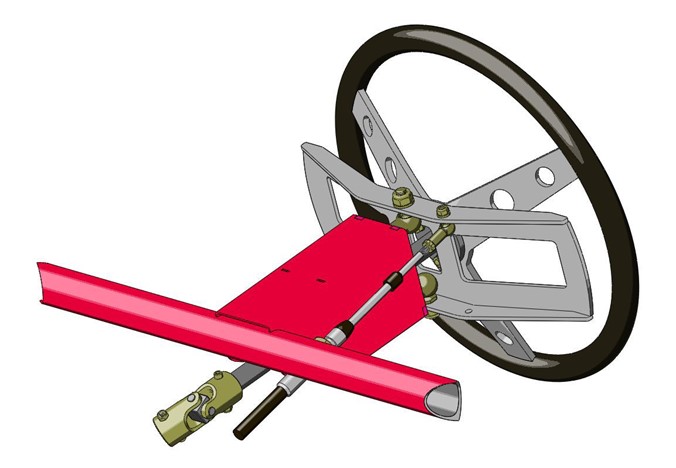Some people love ’em, some people hate ’em, most don’t really understand them. You’ll probably notice that many of the Rorty buggies you see on build threads and on Rorty.net are using something other than air shocks. Why? The main reason is they get a bad rap.
I’m no expert on shocks and springs, I just go by what I see, try and read about. I don’t pay much attention to forums and tend to rely on published information from reliable sources, that said, I found a great article on air shocks by Billa Vista. It’s impartial and factual and very informative; I’m not going to repeat it here except to comment on our application. If you want to know how they work, how to tune them, the theory behind them and how to rebuild them check out this great article.
We recommend air shocks for Rorty buggies and here’s why –
- They are simple to install
- They are lightweight
- They suit the size and weight of Rorty Buggies
- They suit the conditions most people run in
- They are infinitely tunable and you won’t end up with a shed full of unsuitable coil springs!
So what’s the bad press about? They are gas springs. The nature of gases means they expand with heat. This expansion changes the ride height and the spring rate of the gas spring.
Our buggies weigh in the range of 350-750kgs (1400-1650lbs), and they generally have low unsprung weight. Air shocks suit vehicles up to about 1600kgs (3500lbs) or heavy rock crawlers that don’t do anything fast. This means in our situation there is not a lot of weight to control, which means lower suspension velocities and less heat. The shocks are also out in the air stream giving them plenty of cooling.
To give you an idea of the way that heat affects gases here’s a little science: The ideal gas equation PV=nRT
where: P=pressure, V = volume, n= moles of gas, R=ideal gas constant, T=temperature
Since we’re working in a closed system (the shocks are sealed when in use) we can assume that n is constant, we already know R is constant and P is also constant when the vehicle is at rest (it’s a constant weight and the springs don’t change size, meaning the P and the SI in PSI don’t change).
Stay with me here, rearranging things V/T = nR/P since the right side of the equation is constant V/T is a constant. In other words as the temperature goes up so does the volume of the gas in direct proportion. This increases the ride height of the vehicle until the spring tops out and the volume can’t expand anymore, then the pressure rises (we’re going to ignore this extreme case here).
What that all means is that the change in the gas volume is proportional to the change in the temperature or the % increase in temperature (in deg K) = % increase in volume. Here are some examples so you can see what it means to buggy suspension (this is very simplified for discussion purposes):
Lets assume you live in God’s country with me and you start the day at 25deg C (US guys will have to convert that one, I’ve never worked out Fahrenheit) after a few hours driving your shocks have heated up:
Volume Change with Heat – ideal gases
| Final shock temp | % volume change |
|---|---|
| 30oC | 1.7% |
| 35oC | 3.4% |
| 40oC (warm/hot to touch) | 5% |
| 50oC (hot to touch) | 8.4% |
| 60oC (very hot to touch) | 11.7% |
| 80oC (burns) | 18.5% |
| 100oC (egg frying) | 25% |
In long rough racing conditions we might expect our shocks on these light buggies to get up to 40-50oC. These are superlite buggies not trophy trucks! Assuming a basic Fox 2.0 air shock set up, we might expect a 5-8% increase in the gas charge volume in the shock which equates to a ride height increase of 8mm-13mm or .3″-.5″ which in most instances will not be noticeable. I used a simplified calculation and a bit of an approximation but close enough for comparitive purposes.
In reality, the shocks won’t get this hot during recreational use and in heavy use situations the small change in ride height will not be noticeable. To combat the potential affects you can:
- set your ride up to allow for a minor increase in ride height once the shocks have warmed up
- make sure the shocks have plenty of cooling air flow.
- keep weight in your buggy to a minimum (have I said that before?)
- use only dry nitrogen to charge your shocks (air with water vapour = big volume changes, corrosion and O2 permeates seals hardening them and losing shock pressure)
All in all the benefits of air shocks in Rorty superlite buggies well outweigh the downsides!



